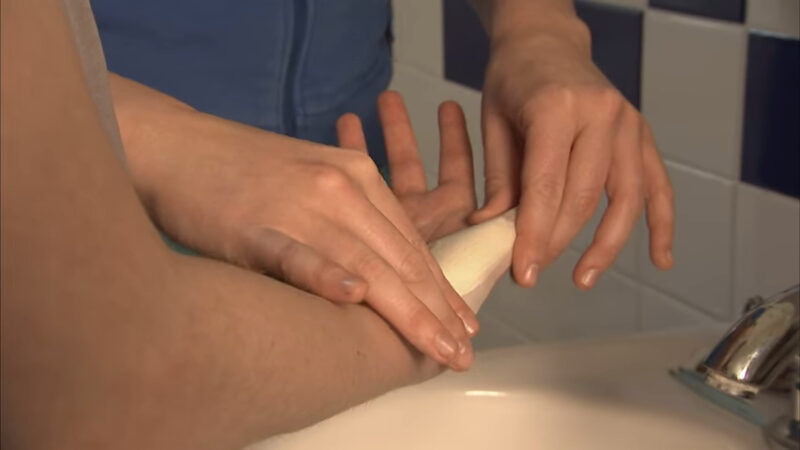You follow the doctor’s orders when it comes to taking your medication, switching your dressings, and treating the wounded area with careful attention. Understandably, you want to get back to your healthy, tip-top shape in the least amount of time possible.
Wondering how to make a wound heal faster? Keep these methods in mind to recover from your injury in record time:
Get Your Rest
A study was conducted to find relevant answers that highlighted the connection between sleeping and the healing process. Researchers compared two groups of participants:
- A group was restricted to only three hours of sleep per night
- Others slept normally throughout the study
The findings were significant. The group with limited sleep showed increased levels of pro-inflammatory cytokines.
These are proteins that signal inflammation in the body. While inflammation is a part of the healing process, excessive inflammation can be detrimental. It can slow down healing and even cause tissue damage. Moreover, the study found that limited sleep delayed wound healing.
The group that slept only three hours took almost a day longer to heal compared to the group with normal sleep patterns. This delay is substantial, especially in the context of recovery from injuries or surgeries. These findings underline the importance of a healthy sleep routine for those seeking a speedy recovery.
Adequate sleep allows the body to heal more efficiently. It’s not just about the quantity of sleep, but also the quality. Restful, uninterrupted sleep provides the body with the necessary time to repair and regenerate tissues, fight infection, and reduce inflammation.
Eat your vegetables

Nutrient-rich foods, particularly those high in specific vitamins and minerals, are extremely beneficial. Vitamins and minerals like vitamin A, copper, and zinc, commonly found in fruits and vegetables, are key to effective healing. These nutrients play various roles, from supporting immune function to aiding in the regeneration of tissue.
Healthline suggests a variety of foods that are particularly effective for wound healing. Dark, leafy greens such as kale, spinach, and Swiss chard are packed with nutrients that support the healing process. Ginger, known for its anti-inflammatory properties, can help reduce swelling and promote recovery.
Mushrooms are another excellent food, offering a blend of essential vitamins and minerals. Beets, with their high content of nitrates, improve blood flow, which is crucial for delivering nutrients and oxygen to the wound site.
Lastly, yogurt is a great source of protein and probiotics, both of which are important for tissue repair and maintaining a healthy immune system. A diet rich in these power foods can significantly impact the speed and effectiveness of wound healing.
Stay active
When recovering from an injury, it’s crucial to stay as active as your condition allows. Adhering to a regular exercise routine, even if modified, plays a significant role in your healing process. The type and intensity of exercise you can engage in might change depending on your injury.
For instance, if your usual high-impact workouts are not feasible, consider switching to less strenuous activities. This could include exercises like gentle yoga, stretching, or even basic movements that don’t strain your injury. Walking is an excellent alternative for maintaining physical activity.
A simple stroll around your neighborhood after dinner can be beneficial. This light form of exercise promotes increased blood flow throughout your body, including to the injured area. Enhanced circulation is a key factor in healing, as it helps in transporting nutrients and oxygen to the wound, aiding in faster recovery and reducing the risk of complications.
However, it’s important to tailor your exercise routine to your specific injury and overall health condition. What works for one type of injury may not be suitable for another. Therefore, consulting with your doctor or a physical therapist is essential.
They can provide professional advice and recommendations on the most appropriate physical activities for your particular situation. They might suggest specific exercises that target the injured area without causing further harm or recommend a gradual increase in activity level as you heal.

Don’t smoke
Smoking cigarettes can significantly hinder the healing process, particularly when recovering from an injury or surgery. The harmful substances in cigarettes, including nicotine, carbon monoxide, and other toxins, can impair blood flow and oxygen delivery to the tissues.
This reduction in blood flow and oxygen can slow down the body’s natural healing mechanisms, making it more challenging for wounds to heal properly and efficiently.
| Risk Factor | Description | Impact on Healing Process |
|---|---|---|
| Reduced Blood Flow | Smoking causes blood vessels to constrict, reducing blood flow to the wound area. | Slows down wound healing and tissue repair. |
| Decreased Oxygen Delivery | The presence of carbon monoxide in cigarettes lowers the blood’s oxygen-carrying capacity. | Impairs tissue regeneration and healing. |
| Weakened Immune Response | Smoking suppresses immune function, making the body less effective at fighting infections. | Increases the risk of wound infections. |
| Impaired Medication Efficacy | Certain substances in cigarettes can interact with medications, reducing their effectiveness. | May lead to less effective treatment outcomes. |
| Increased Inflammation | Smoking can cause and exacerbate inflammation in the body. | Can prolong recovery and increase pain. |
Moreover, smoking increases the risk of several complications during the healing process. One of the primary concerns is the heightened risk of infections. Smoking compromises the immune system’s effectiveness, making it harder for your body to fight off potential infections at the wound site.
This can lead to longer recovery times and may require additional medical interventions.
Keep the wound clean and dressed

Ensuring that a wound is kept clean and properly dressed is a fundamental aspect of the healing process. It’s important to continue this practice diligently, even if the wound appears to be healing well. Prematurely discontinuing the cleaning and dressing routine can lead to setbacks in the healing process, including the risk of infection or delayed wound closure.
Regular cleaning of the wound is crucial. It involves gently removing any debris or exudate (fluid that leaks out of blood vessels into nearby tissues) and applying appropriate antiseptic solutions as recommended by healthcare professionals.
This practice minimizes the risk of infection, a common complication that can significantly delay healing. Dressing the wound is equally important. The right type of dressing helps maintain an optimal environment for healing. It keeps the wound moist, which is essential for cell migration, a key process in tissue repair.
Additionally, dressings provide a barrier against external contaminants, further reducing the risk of infection.
FAQs
Why is my wound watery and not healing?
A watery discharge, known as exudate, is normal in the early stages of healing. However, if the wound is excessively watery and not healing, it could be a sign of infection or improper wound care. Consult a healthcare professional for an accurate assessment.
What is the white stuff on my wound?
The white stuff on a wound is typically fibrin. It’s part of the natural healing process, forming a protective layer or scab. If the white substance is thick or accompanied by a foul odor, it might be pus, indicating an infection.
Should you remove white tissue from a wound?
Generally, you should not remove white tissue (fibrin) from a wound as it’s part of the healing process. However, if there’s an excessive buildup of dead tissue or signs of infection, a healthcare professional may need to clean it. Self-removal can cause further injury or infection.
The Bottom Line
Speeding up the wound healing process involves a combination of effective self-care strategies and adherence to medical advice.
Key practices include maintaining a balanced diet rich in nutrients essential for healing, staying hydrated, getting adequate rest and sleep, avoiding smoking, and keeping the wound clean and properly dressed.
Regular, moderate exercise, as advised by a healthcare professional, can also enhance blood flow and aid in faster recovery.







